Many people want to start a vegetable garden to save money. It’s no wonder, since buying produce at the market can cost eight times more than growing your own.
To help you in your quest to grow vegetables, we’ve compiled the following list of vegetable garden tips and ideas to help you keep the initial cost as low as possible, and to successfully grow all the vegetables you want for your table. If you’re ready to create your vegetable garden, here are some ideas on how to do so on the cheap.
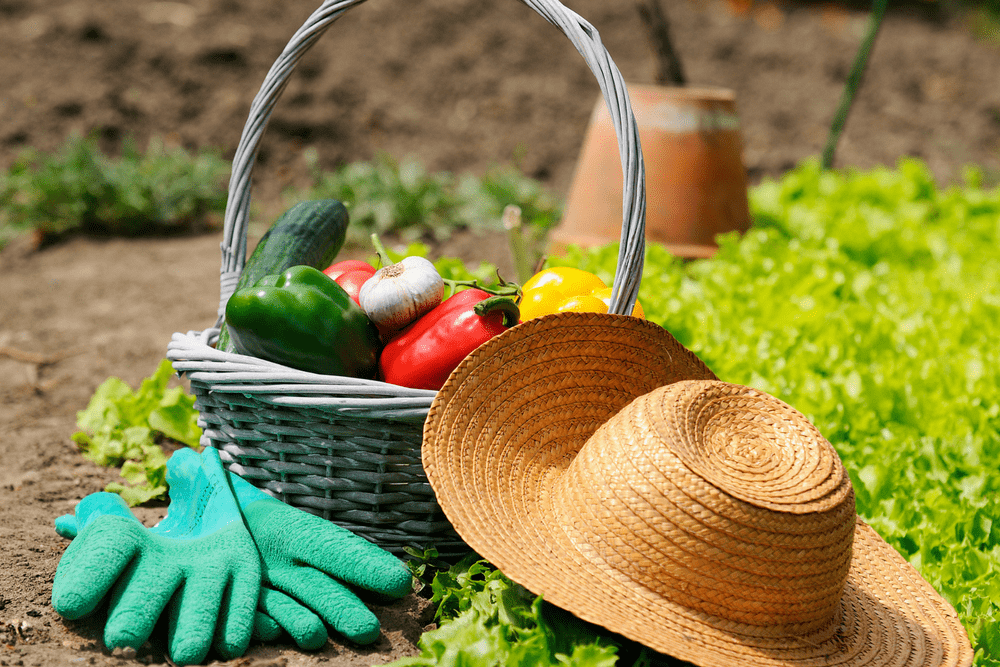
Gardening: Benefits and challenges
There are many other good reasons why you may want to grow some of your own produce in a vegetable garden. First, you can enjoy better tasting food by growing varieties of vegetables selected for flavor rather than shipping and storage, as so many market vegetables.
Also, many people find that their cooking habits change after growing their own vegetables. They prepare simpler and less expensive meals. Still others make tending the vegetable garden a family activity to help teach children about healthy eating. It gets the whole family outside and moving — pulling weeds is a workout!
Along with these benefits, there are also some challenges to consider before starting a vegetable garden.
Know that gardening requires routine work, including planting, weeding, watering, and harvesting.
In addition, growing vegetables requires a sunny location. Most vegetables require at least six hours of direct sunlight every day, and more sunlight is better.
Upfront costs can be high, especially if you need to buy fencing or gardening tools or build good growing soil. However, you can reap the rewards of your investment for years to come.
You also need to realize that not all gardeners are successful. Some report losing some or all of their crops, particularly in the first two years as they learn how to plant, tend and harvest their crops.
However, many new gardeners take the leap every year and learn that planting a vegetable garden is a very satisfying outdoor summer activity that can save them money and help them eat healthier.
Cheap vegetable gardening ideas
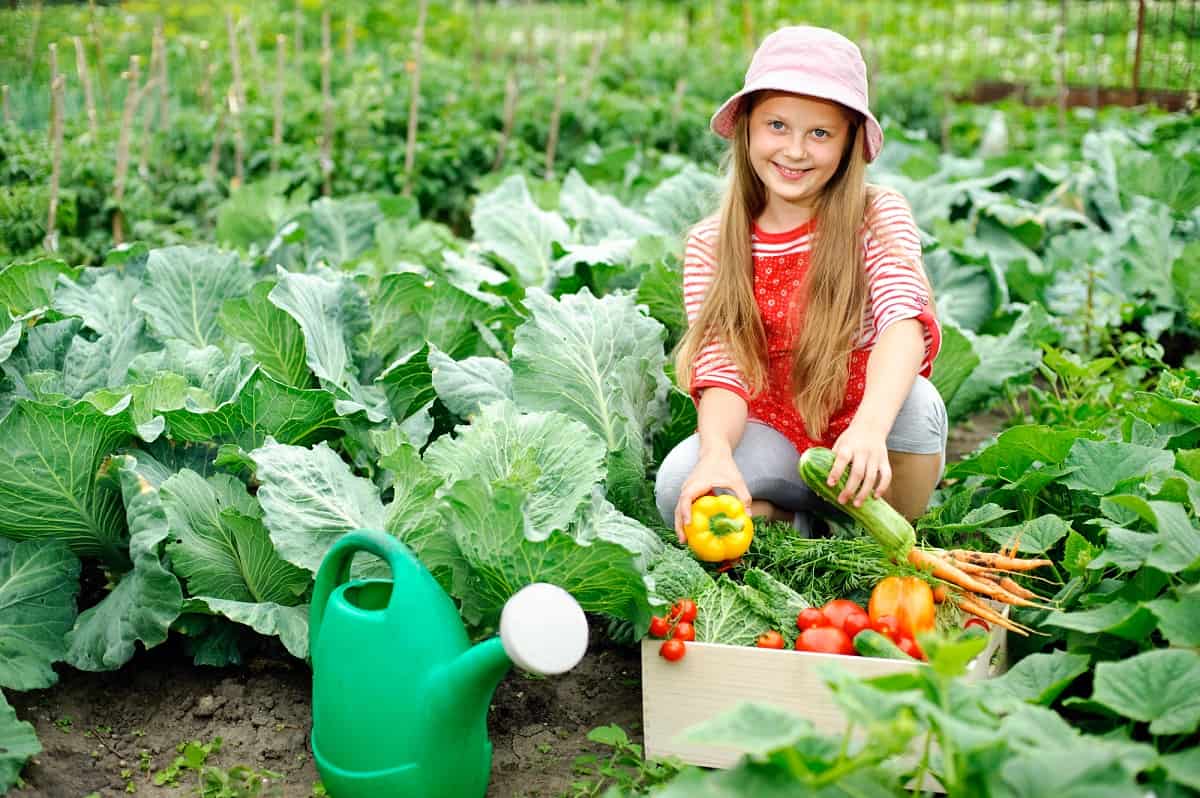
Photo: Deposit Photos
Make a garden plan
Decide which vegetables you will grow. Make sure you can provide the optimal growing conditions including sun, water and space. Ask your neighbors which vegetables they’ve had success with and which don’t do well in your microclimate. That way you don’t waste time and money on plants that are less likely to grow.
Get free vegetable garden plans from Better Homes and Gardens.
Start small with container gardening
Especially if you live in the city, container gardening is easy and scalable. Instead of planting a garden in the ground, you plant your seeds or seedlings in a portable container, such as a ceramic planter.
Containers can be repurposed from almost anything. Cheap containers you can use to grow vegetables include milk jugs, two-liter soda bottles with the tops cut off, five-gallon plastic buckets, metal bins and plastic kiddie pools. You can even use a plastic bag of soil as an ad hoc planter. Another idea for cheap container vegetable gardening is to pick up ceramic and terra cotta flower pots for almost nothing at garage sales and thrift stores.
- 2FT GROWING DEPTH: 24 inches of depth holds up to 269 gallons of soil-great for medium to deep rooting plants and vegetables like broccoli, beans, and more. Note: This product does not include a bottom panel
- TOOL-FREE ASSEMBLY: Beveled steel panels come together with a set of included wingnuts and bolts with rubber edging for your added safety
- BUILT TO LAST: Made of powder-coated steel panels, this garden bed is the perfect, sturdy planter for romaine lettuce, cucumbers, strawberries and other seasonal crops
- Each raised metal garden bed size: 4×2×1ft ,7.14Cu
- Upgraded quality and structure: raised garden beds outdoor are made of Q195 galvanized metal sheet, double-layer anti-corrosion galvanizing and oval structure design, which is more beautiful, can withstand greater pressure at the interface, is not easy to loose, and the interface will not Deformed and can be reused for many years.
- Easy to set up, this galvanized stock tank only takes about 5 minutes to easily assemble and continue planting plants.
- FITS SEAMLESSLY INTO YOUR LIFE- This 4x2x1 ft open-base raised garden bed has all the space you need in order to grow your dream garden! Whether you're planting your own fruits, vegetables, or flowers, it provides a safe environment for your plants to thrive. With a wide range of sizes and styles to choose from, our garden beds can be customized to fit your space and style preferences. The Plant & Plot garden bed is the perfect addition to your outdoor space!
- EFFORTLESS ASSEMBLY, LIKE NO OTHER! Begin your planting journey by choosing our innovative patent-pending design, featuring the perfect combination of easy assembly and durability. Thanks to our unique tool-free design, assembly is a breeze and can be completed in just 20 minutes! Get started on your garden right away and enjoy fresh, healthy produce in no time.
- BUILT TO LAST- The Plant & Plot garden bed is treated to withstand everyday wear and tear due to its 0.6mm thick, galvanized metal sheets and a highly durable zinc coating. Our prime materials ensure the garden bed is sturdy and maintains its shape over time. From heavy rain to extreme heat, we made sure to protect your garden bed from rust and corrosion, so it's the perfect choice if you're looking for a long-lasting solution.
- SIZE & APPLICATION : Pack with 3PCS 10 Gallon/36L planter bags, which sizes: 23.62in x 11.81 in x 7.87in / 60cm x 30cm *20cm (L x W x H), These pots are suitable for indoor or outdoor using , ideal for patios, small gardens, balconies, sun rooms, and any outdoor space, good for planting potato, taro, radish, carrots, onions, and many other vegetables,fruit,flowers.
- PREMIUM MATERIALS & CRAFTSMANSHIP : Made of 300GSM thickened non woven breathable fabric,particular sewing technique to ensure durable in use. these pots are moderately permeable, environmentally friendly, and BPA-free, very practical & convenient.
- FAST GROWTH & RECYCLING : Non woven fabric pots will not retain excess water, allowing plant's roots to breathe, promote better air circulation throughout the root system, keep plants healthier, more vigorous growth. They are washable, easy to clean and use repeatedly.
- Sturdy Fabric Material: Made of 300g of thickened nonwoven fabric, these pots are moderately permeable, and BPA-free
- Great Drainage: Nonwoven fabric means the pots do not retain excess water, allowing your roots to breathe for healthier, more vigorous growth
- Durable, Reinforced Handles: While the competition uses flimsy handles that are merely strips of the same fabric the pot is made from, we use serger stitches to sew handles onto the pot so they can support a full bag of soil
- Made of galvanized steel, ensuring durability and rust-resistance
- Large size of 4x2x1ft, providing enough space for growing various plants and vegetables
- Easy to assemble with included instructions and hardware, perfect for homeowners with outdoor spaces
- Perfect gift for gardeners: Lead free, non-toxic, harmless, space efficient alternative to plastic garden pots. Heavy duty planter bags have a good hand feeling and flat base for easy fillment by yourself. Keep plant warmer in winter and cooler in summer
- Excellent drainage: It provides water drainage through the soil to eliminate over watering and allows your roots to breath, translating to a healthier and more vigorous growth
- Fabric Material: Made of 300g thickened nonwoven fabric, these pots are moderately permeable, environmentally friendly and BPA-free. Can be washed and reused for future seasons
- SIZE: The plant bed measure is 46"L x 23.6"W x 11.8"H. This planter box provide ample growing space to raise vegetables, flowers and plants.
- SAFETY: Keep your plants safe, the galvanized garden bed are made with eco-friendly coatings, which do not leach into soil and prevent plants from touching the metal.
- BOTTOMLESS FRAME: Open bottom of garden raised planting bed is good for drainage. The roots of plants can extend freely, so the plants would grow better.
- MATERIALS: Non-woven fabric. Fabric allows roots to breathe and grow healthier, boosts plant growth and yields. Decreased risk of transplant shock, creates improved overall root structure,and BPA-free.
- DESIGN: It Provides Water drainage through the soil to eliminate over watering. Keeps plant warmer in winter and cooler in the summer.
- MOVE AND STORAGE: The plants planted in the bag can be transported anywhere and anytime, Built-in study handles for easy movement, indoor or outdoor use and easy to fold for storage.
- SIZE: 40-1/2" L x 15-1/2" W x 31-1/2" H overall, planting box: 37-1/2" L x 15-1/2" W x 8" deep, holds about 2.5 cubic feet soil, provide ample growing space to raise vegetables, herbs, flowers and plants
- ERGONOMIC: Elevated raised planter box with legs eliminates the need to bend over, making gardening convenient. Raised garden bed on wheels, move to anywhere you want, with handy shelf holds accessories or tools
- METAL: Made of stable galvanized steel raised garden bed with anti-rusty grey coating, not made of wood which may rot. It can place outside or indoor for long time use
Begin with a few small containers or one large one. Make sure you choose a container that suits the vegetable you wish to plant in it.
If you’d rather plant in the ground, start small by digging a 10 foot by 10 foot or smaller garden plot, or adding a few vegetables and herbs to your existing landscape.
Here is some advice for container gardening with vegetables from Farmers Almanac.
Begin with easy-to-grow salad greens
Many first time vegetable gardeners start with salad greens and herbs. Plant in succession for a continuous crop, which means plant a few heads at a time, and start a new set every two to three weeks. You can make your own salad table with these instructions.
For herbs, start with easy to grow and versatile herbs such as parsley, rosemary, thyme or oregano. You’ll be amazed how you can save money when you don’t have to buy an entire expensive bunch of herbs just to use a few sprigs in a recipe.
To get started, visit these vegetable, fruit and herb gardening guides from the National Gardening Association.
Plant seeds, not seedlings
As you gain confidence, you can learn to plant seeds rather than seedlings. (See “How to start seeds indoors” below.) Seeds are a cheap way to create a garden as they cost much less than potted seedlings already grown in a nursery. While seed packets are inexpensive, your bill can still quickly add up, so it’s best to think through your choices. Make a list of what vegetables and flowers you most want to grow and then list secondary choices and compare prices.
Find seeds at your local nursery, or shop online for cheap seeds. Check several sites, as prices vary. When choosing between varieties, select seeds that match your climate zone. For instance, if you live in an area that has short summers, choose varieties with the fewest days from seeding to harvest.
- Includes 30 Different Varieties! 30 Packs of Seeds!
- High Germination Rate within 7-14 days
- All Seeds are Heirloom, 100% Non-GMO (Non Genetically Engineered)
- HEIRLOOM VEGETABLE SEEDS - These open-pollinated, non-hybrid, raw, chemically untreated heirloom seeds for planting vegetables and fruits have never been sourced from Monsanto and never will be!
- FOR SURVIVALIST, PREPPER SUPPLIES, & EMERGENCY SUPPLIES - These heirloom seeds are for emergency situations, such as hurricanes, tornadoes, floods, droughts, war, famine, and other natural disasters or acts of God. OSV garden seeds are essential for bug out bags, preparedness kits, camping gear, and survival gear equipment.
- PLENTIFUL HARVEST - You can harvest up to 15,000 fruits and vegetables from 3,000 seeds per variety seed pack, such as beans, pumpkin, lettuce, tomatoes, sunflower, radish, spinach, carrots, cucumbers, watermelon, squash, peppers, and eggplants.
- Set includes 43 lightly assorted Vegetable and Herb seeds!
- All Seeds are Heirloom, 100% Non-GMO!
- High Germination Rate within 7-14 days
- Quality Seeds to Feed Your Family - These 18,500+ heirloom seeds will provide food and essentials for culinary and medicinal use all year round. This assorted food crop includes veggies, fruits, and herbs to grow during cool and summer seasons. After spring, summer, and fall harvests, it's easy to store future food supplies by canning, drying, and freezing for later use during cold weather. The vaults also make unique gifts for any homesteader, survivalist, prepper, or veggie gardener.
- Grow a Bounty of Produce - This starter pack seed kit contains a mix of essential herbs, fruit, and vegetable seeds for a harvest of fresh homegrown food from your victory garden. The 30 packs include greens, lettuce, tomatoes, hot and sweet peppers, cruciferous veg, herbs, melons, carrots, beets, radishes, greens, okra, winter and summer squash, cucumbers, and more.
- The Info You Need to Grow - The mix of vegetable seeds in this seed bank is packed in individual paper packets with key information for successful growing and germination in your home garden. Each package also has instructions for saving seeds after harvest. Getting started is simple for both beginner and experienced gardeners.
- Vegetable seeds for planting: Go ahead & indulge that ‘green’ thumb! Plant & grow your own vegetables at home using the seed mix offered by our vegetable growing outdoor and indoor garden kit arranged for “do it yourself” vegetable gardening.
- 20 vegetable varieties per bundle: Growing your own vegetables for eating has never been this easy. Separated into (20) varieties packaged in paper packets, our vegetable garden diy kit’s seeds yield a healthy mix of fresh produce.
- Approximately 8,000 veggie seeds: Each veggie garden set contains approximately 8K easy grow vegetable gardening seeds, including lettuce seeds, cucumber seeds and tomato seeds for growing lettuce, cucumber, tomato, carrot, onion, broccoli, brussels sprouts, peppers, beets, spinach, zucchini & more.
- ASSORTMENT - 35 easy to grow vegetable varieties and over 16,000 seeds. All non-GMO and heirloom varieties. Our survival pack includes lettuce, beets, carrots, onions, squash, zucchini, tomatoes, peppers, broccoli, peas, beans, and more. Complete gardening kit for growing your home garden.
- PROFESSIONAL - Packed in seed packets, not plastic bags: plastic bags can harbor mold and ruin vegetable seeds. Complete growing and harvesting instructions included on every packet. Perfect for indoor garden and hydroponics growing system.
- USA - Seed bank grown, sourced, and packaged in the USA. It makes excellent gifts for moms, adults and gardening gifts for men. Provide emergency food security by growing and saving seeds or storing our seeds in a cool, dark, dry place in its water resistant packaging.
- 100% ORGANIC AND NON-GMO: There's no need to worry about intoxicants that may hinder your plant's growth because the Back to the Roots Seed Bundle is completely organic and not genetically modified
- GROW YOUR PLANT ALL YEAR-ROUND: The 30-pack seed kits of herbs and vegetables for indoor and outdoor planting allows you to grow your garden all-year round; They're all germination tested and specially selected to be easy to grow quickly so you can get your garden off to a great start
- WIDE VARIETY OF ORGANIC HERB AND VEGGIE SEEDS: We've put together these varieties with the new gardener in mind, with a little bit of everything — flavorful herbs, hearty veggies, and crisp, leafy greens; You'll have endless options for what to cook with your garden-fresh harvests. Actual seed may vary from image shown.
- COMPLETE SEED KIT: A diverse selection of 50 carefully chosen herb seeds, flower seeds and seeds for planting vegetables
- Premium Non GMO Seeds: With 99% purity and exceptional germination rates, our gardening seeds guarantee a thriving garden of healthy and vibrant plants for environmentally conscious gardeners
- Elegantly Designed Packaging: Our premium pouch boasts a captivating design, securely storing a diverse array of seeds. An ideal gardening gift for all green thumbs
- 15 Vegetables - Detroit Dark Red Beet, Golden Acres Cabbage, Imperator 58 Carrot, Big Red Pepper, National Pickling Cucumber, Black Beauty Eggplant, Large Red Cherry Tomato, Beefsteak Indeterminate Tomato, Butternut Squash, Straightneck Summer Squash, Crimson Sweet Watermelon, Black Beauty Zucchini, Cherry Belle Radish, Parris Island Lettuce, and Dwarf Siberian Improved Kale.
- Excellent Variety - 15 vegetables for growing in a home survival garden. Enjoy healthy, good food all year round with a good mix of flavors and nutritional profiles. These vegetables include summer favorites and cool weather varieties, as well as choices that store well or can be canned or otherwise preserved.
- Produce Bounty - Many varieties of herbs, fruits, and vegetables to grow, including tomatoes, peppers, cruciferous vegetables, herbs, melons, carrots, beets, radishes, greens, okra, squash, cucumbers, and more.
- USDA Certified Organic by Oregon Tilth
- 10 varieties of veggie garden seeds packed fresh for the current and following year
- genovese BASIL (Petroselinum crispum) cascadia SNAP PEA (Pisum sativum) di cicco BROCCOLI (B. oleracea var. italica) bush blue lake 274 BEAN (Phaseolus vulgaris) jalapeno PEPPER (Capsicum annuum) brandywine pink TOMATO (Solanum lycopersicum) gourmet mix LETTUCE (Lactuca sativa) marketmore CUCUMBER (Cucumis sativus) scarlet nantes CARROT (Daucus carota) cocozelle ZUCCHINI (Cucurbita pepo)
The easiest vegetables to start from seed are beets, carrots, cucumbers, green beans, greens (including kale, spinach, Swiss chard, and lettuces), pumpkin and winter squash, radishes, tomatoes, and zucchini or other summer squashes. Follow planting instructions on the seed packet. For a spring garden, you may need to start seeds indoors (see below). Other seeds can be planted directly in the ground.
To acquire seeds on the cheap, ask your friends and family if they have spare seeds, or if they want to share the cost of seeds with you. That’s two gardens for the price of one! Once your garden is established, save seeds from one year’s harvest to plant the next. That will save you money over purchasing seeds from the gardening center every year, and you can be generous and share with your gardening neighbors.
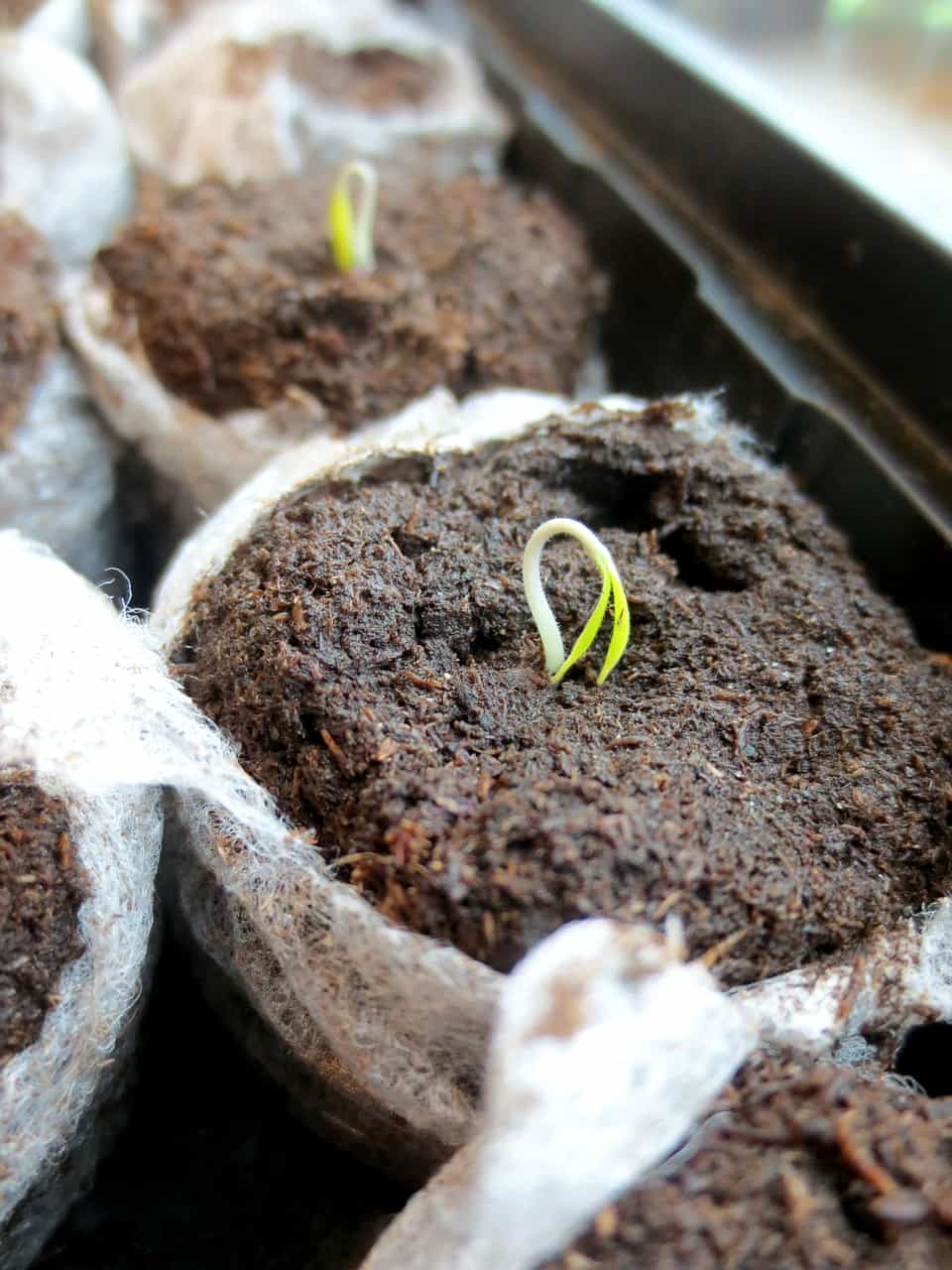
Photo: Deposit Photos
Grow vegetables your family eats
Start with vegetables that you are already buying and eating. Choosing to grow vegetables your family enjoys will give you the highest return over store-bought produce. Once you’re successful, try adding a new vegetable each year. You might be surprised that the home-grown version tastes better or that kids are more willing to try a food they picked from their back yard.
Water wisely
The best times to water your garden are early in the morning or later in the evening. Never water in the middle of the day when evaporation is higher; less water makes its way to your plants.
Another way to save money on your water bill is to capture rain water for use in your garden. You can buy a rain barrel at places like Home Depot or Walmart, but you can also make one for less money. Try these four DIY rain barrels.
Make your own compost from yard and food waste
You can be earth-friendly and good to your garden by taking up composting. You may need to purchase good soil to start your garden, but you should never need to buy compost or fertilizer once you’re making your own. You will need to invest in a good compost barrel to start, but that purchase will bring value, as you reuse rather than trash your food scraps and save money on your gardening bills.
If you want to acquire a compost bin on the cheap, look on your local neighborhood buy-and-sell or giveaway groups to see if anyone is ready to part with theirs.
Use cheap fencing
You might need to erect a fence to keep out critters such as deer, raccoons and rabbits — not to mention household pets and young children. For a cheap fence option, use inexpensive chicken wire attached to wood or metal stakes to protect your vegetables from being eaten by animals.
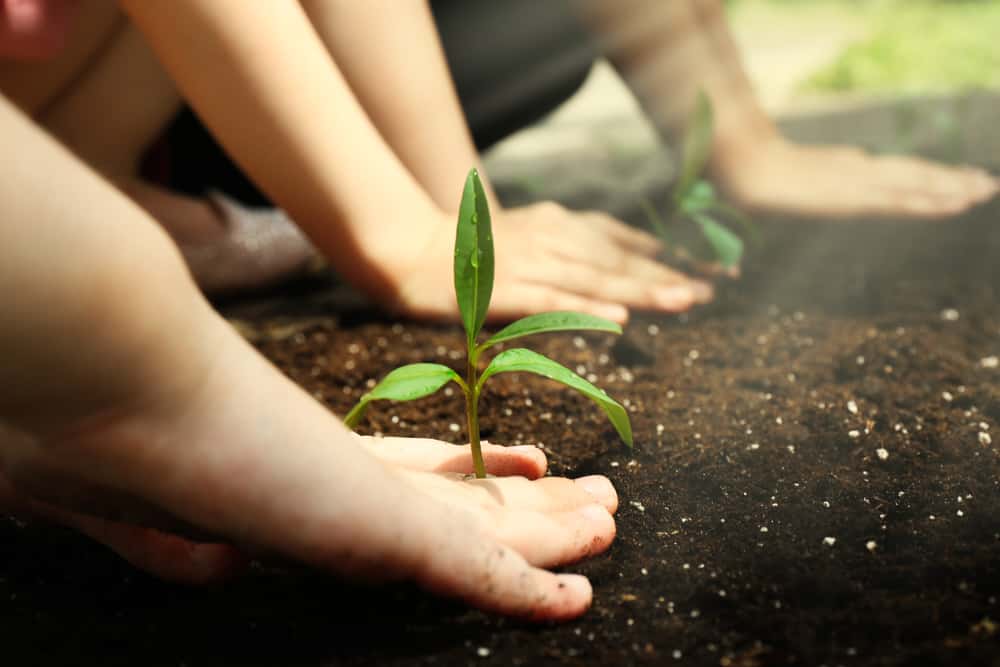
Photo: Deposit Photos
How to start seeds indoors
You can get a jump-start on your spring garden and save money by seeding veggies and flowers indoors. Essentially, you’ll start your garden early by growing seeds into seedlings in your house before transplanting them to your outdoor container or garden plot. If you can do this successfully, it’s the cheaper way to go because buying seedlings is much more expensive.
Here’s our step-by-step guide to starting your vegetable garden indoors:
- Find a container. You can plant seeds in just about any type of container, as long as it has drainage holes. You can use plant pots you saved from a prior season or cheap plastic containers from the grocery store that held produce items.
- Add soil. Fill each container with a light seed-starting soil mix that you’ve pre-moistened. Gently pat down the soil surface to make it even.
- Plant the seeds. Avoid seed mix-ups by planting each type of seed in a separate container. Sprinkle small seeds on the soil surface and cover with additional seed-starting mix in a layer the same thickness as each seed type. Light seeds require a very thin coating. Push larger seeds, such as squash, cucumber and pumpkin, below the soil surface to the same depth as the width of the seed and cover with soil.
- Label. Use a pencil to label craft sticks with the name of each plant and the date. Insert in the appropriate container.
- Moisten and cover. Mist the soil surface again with a spray bottle until it is thoroughly moistened. Cover the pots with a plastic lid, or use plastic wrap. Place the containers in a warm place.
- Maintain. Encourage seed sprouting by creating a humid environment. Keep the soil moist and the containers covered. Remove the lid or plastic when the seedlings emerge.
- Find the best light. Seedlings must receive adequate lighting. While a bright window may work, putting them under full-spectrum lighting is best. Such lighting can be found in tubes and bulbs. Place the light within two to three inches of the top of the plants.
- Water. Keep the young plants moist but not soggy. Too much moisture can lead to fungal pathogens that cause root rot, and too little water causes tender seedlings to quickly perish.
- Transplant. Once the seedlings have grown two sets of true leaves, they are ready to transplant outdoors in the garden, if the chance of frost has passed. When the weather is still too cold, pot up into containers and keep them indoors under lights. The plant should equal two-thirds of the plant/pot combination.
If you liked this article, you may also enjoy:
- How to save money with a rain garden
- Make the most of your garden’s harvest
- Conserve water, save money with a home garden xeriscape
- 5 easy, frugal steps to sustainable living
- Regrow your own green onions in your kitchen
- Great gifts under $25 for organic gardeners
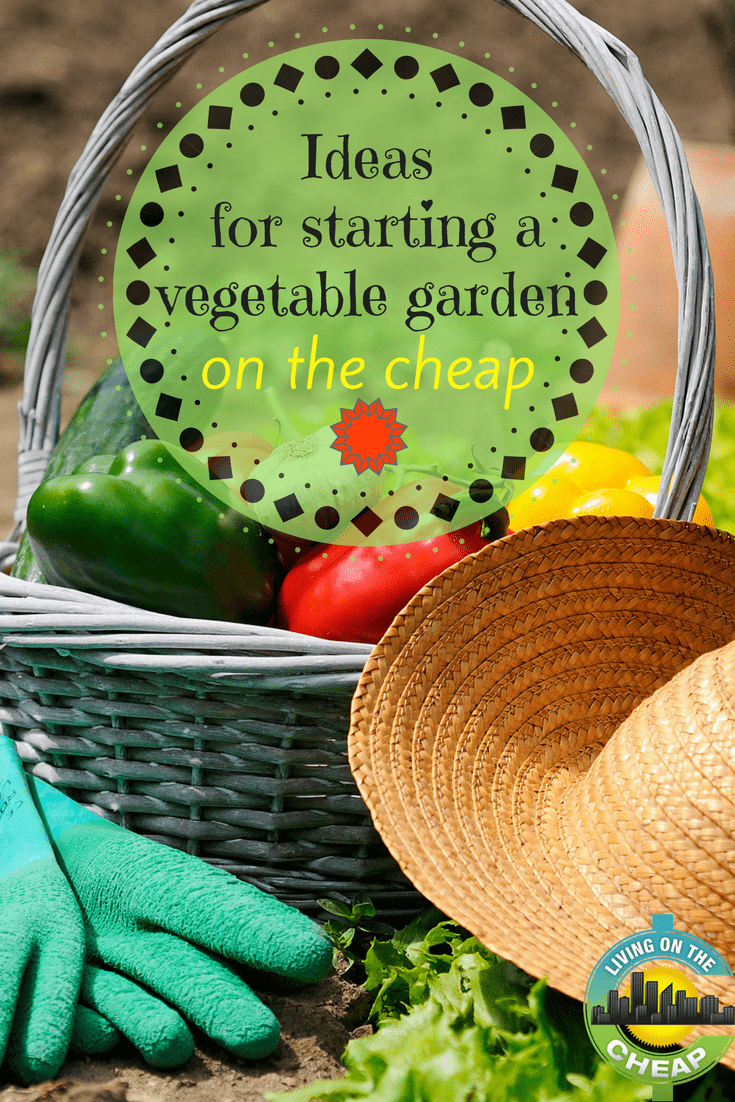





















Many people who need to “live on the cheap” live in apartments. You can grow food on a balcony or small patio, and even in Dollar Tree window boxes inside on your window ledges. I have grown small lettuces, green onions, basil, cherry tomatoes, and strawberries this way. I am getting into recycling my food scraps into compost using Bokashi buckets on my balcony.
In the Seattle area, Fred Meyer stores have an annual Saturday “Fuschia” sale where they will fill up your planters (even big ones–I bring the litter buckets I grow tomatoes and root veg in!) with FREE potting soil when you buy any plant; fuschias and strawberry plants are usually cheapest. I buy the strawberries. This gardening event is coming up, probably mid-April.
What great information! Thank you for sharing.